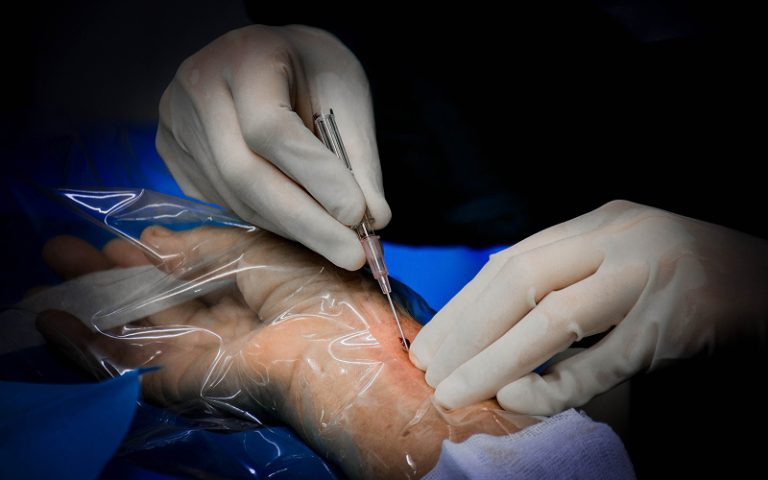Hand surgeons provide specialised care for various conditions affecting the hand, wrist, and forearm. Most are trained as orthopaedic hand surgeons, meaning they have a thorough understanding of the musculoskeletal system, as well as further subspeciality training in delicate hand anatomy, nerve repair, microsurgery, and reconstructive procedures. These procedures are commonly required due to trauma, repetitive strain, nerve compression, congenital defects, or degenerative diseases.
Discover what procedures are routinely performed by a hand surgeon in Singapore, helping patients make informed decisions when referred for specialist intervention.
1. Fracture Fixation and Trauma Management
Most of the work performed by orthopaedic hand surgeons revolves around trauma. Hand fractures, particularly those involving the metacarpals, phalanges, and wrist bones, are common due to accidents and sports injuries. Surgical fixation may involve screws, plates, or external stabilisation devices to maintain alignment during healing. Complex or open fractures may also require soft tissue repair or microsurgical techniques to reconnect blood vessels and nerves. Surgeons are also well-versed in managing crush injuries, tendon lacerations, and dislocations with a multidisciplinary approach that includes hand therapy post-operation.
2. Tendon and Nerve Repair
Flexor and extensor tendon injuries can severely affect hand function. A hand surgeon typically performs primary repair for clean lacerations or staged tendon reconstruction for complex or delayed cases. The use of magnification and microsurgical tools allows precise suturing to restore mobility while minimising adhesion formation. Similarly, nerve injuries, whether from trauma or compression, are treated through nerve repair, grafting, or decompression techniques. Typical procedures include digital nerve repair and median nerve release, especially in carpal tunnel syndrome. Early surgical intervention is essential to preserve sensation and motor function.
3. Carpal Tunnel and Nerve Compression Surgery
One of the most frequent procedures conducted by hand surgeons is carpal tunnel release. This surgery relieves pressure on the median nerve at the wrist by cutting the transverse carpal ligament, thereby improving symptoms such as numbness, tingling, and hand weakness. Other nerve decompression surgeries include cubital tunnel release (for the ulnar nerve) and radial tunnel release. These are often performed as day surgeries using minimally invasive or open techniques, depending on the severity of the condition and the patient’s anatomical profile.
4. Arthritis and Joint Reconstruction Procedures
Degenerative diseases such as osteoarthritis and rheumatoid arthritis can lead to severe joint deformities and pain. Orthopaedic hand surgeons offer several interventions, including joint fusion (arthrodesis) to relieve pain or joint replacement (arthroplasty) to maintain mobility. Common sites include the thumb base, finger joints, and wrist. Silicone or metal implants may be used depending on the patient’s age, activity level, and disease severity. Tendon transfers or synovectomy may also be performed in some cases to improve function and reduce inflammation.
5. Congenital and Reconstructive Surgery
Some hand surgeons are trained in managing congenital anomalies such as syndactyly (webbed fingers), polydactyly (extra digits), and other structural deformities. These procedures are often performed in early childhood but may also require follow-up or corrective surgery during adulthood. Reconstructive surgery is also necessary after major trauma, burns, or tumour excision, involving skin grafts, flap coverage, or even toe-to-thumb transfers to restore hand function and appearance.
6. Cyst, Ganglion, and Tumour Removal
Benign hand masses like ganglion cysts, lipomas, and giant cell tumours of the tendon sheath are commonly excised by a hand surgeon. While many cysts are harmless, they may cause pain, cosmetic concern, or compress adjacent structures, warranting surgical removal. Surgeons ensure complete excision to reduce recurrence risk and may send tissue for histological analysis to rule out malignancy.
Conclusion
Orthopaedic hand surgeons offer a wide range of procedures, from trauma and nerve repair to complex reconstructive surgery. Their role is essential in restoring hand functionality and improving the quality of life for patients affected by both acute injuries and chronic conditions. Patients with prolonged discomfort, numbness, or deformity should contact a trained hand surgeon to decide whether surgical intervention is necessary.
Visit National University Hospital (NUH) and take the first step towards restoring full hand function today.

